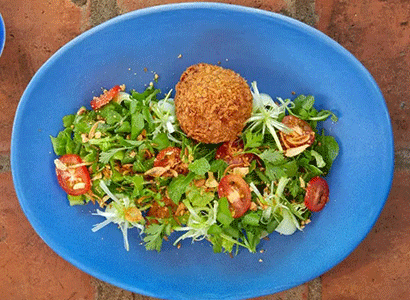Manda De Lao: A culinary journey through Lao heritage
Located in the heart of Luang Prabang on Narasan Road in That Luang village, Manda De Lao offers an authentic taste of traditional Lao cuisine, served in a serene and culturally rich setting.
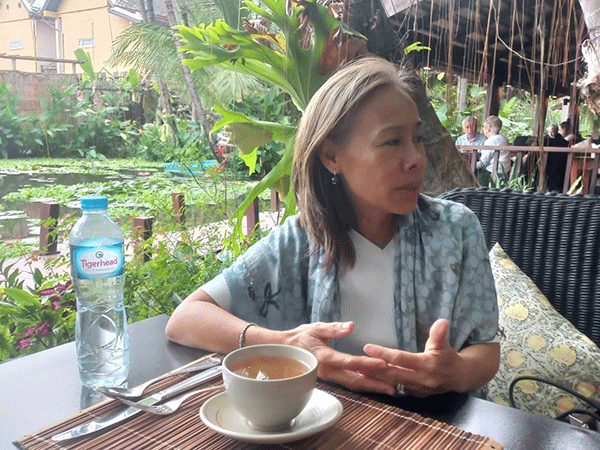 |
Founder of Manda De Lao, Ms Toune Sisouphanthavong.
|
Since opening its doors in 2015, the restaurant has become a beloved destination for both local residents and international visitors.
Set beside tranquil, UNESCO-listed lily ponds and surrounded by lush greenery, the restaurant provides a calm, natural ambiance that complements its deep culinary roots. With a capacity of up to 120 guests, Manda De Lao blends heritage, hospitality and taste into an unforgettable dining experience.
At the core of its concept is a dedication to preserving ancestral Lao recipes, passed down through generations.
The name “Manda”, meaning “mother” in Lao, honours Maman Phiew, a Luang Prabang native born in 1930, whose culinary legacy continues to inspire the menu. Her cooking methods, learned from her own mother, reflected the care and attention typical of the era—long before the age of convenience and fast food.
True to this legacy, Manda De Lao uses only domestic ingredients sourced from local producers.
The kitchen avoids processed powders or artificial flavouring, instead relying on time-honoured techniques and natural herbs and spices to create the restaurant’s signature dishes. Every plate is a celebration of Lao culinary identity—flavourful, nutritious and rich in tradition.
Signature offerings such as laap (Minced Buffalo, prok, fish or chicken mixed with rice powder, lime juice, and Lao herbs ), Or lam, and mok pa (fish mixed with herbs, wrapped in banana leaves, and then steamed or grilled) remain faithful to their original recipes but are enhanced through elegant presentation that appeals to modern diners.
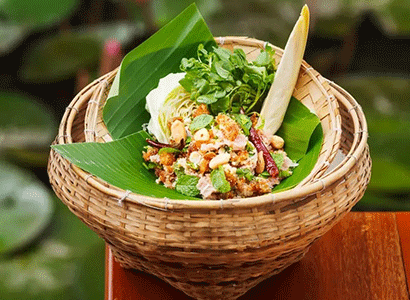 |
Crunchy rice salad, roasted coconut with sour pork sausages,Neam Khao.
|
Other popular dishes include the Luang Prabang Salad, which combines organic greens with a 65-degree Scotch egg, minced pork, crispy shallots, peanuts, and Lao herbs; papaya salad, serves with melting pork or crispy deep-fried pork belly; and chicken with lemongrass.
While the flavours remain deeply rooted in tradition, the visual artistry of each dish lends a contemporary touch that makes the cuisine especially appealing to foreign guests unfamiliar with Lao food.
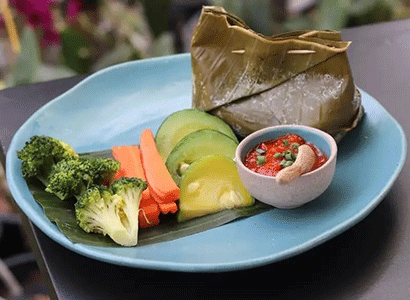 |
Mok Pa.
|
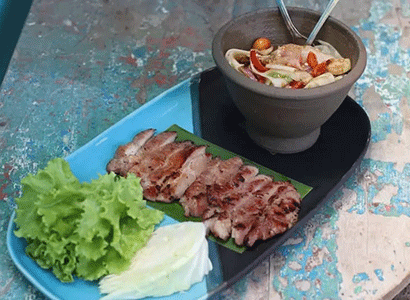 |
Papaya salad served with grilled melting pork.
|
“Manda De Lao is not just a place to eat—it’s a place to experience Lao heritage through food,” says the restaurant’s manager.
“We want guests from all over the world to appreciate the true essence of our cuisine, which reflects the wisdom of our ancestors, adapted with care for today’s tastes.”
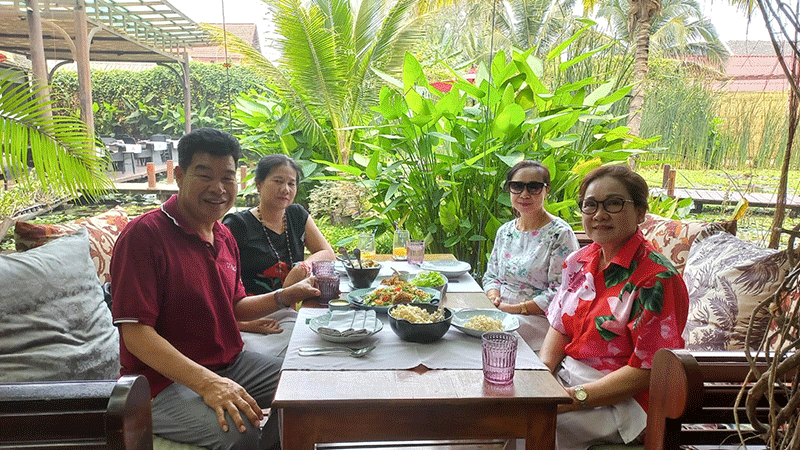 |
Laap is one of the most popular dishes served at Manda De Lao restaurant.
|
The restaurant is especially popular with European tourists, who are drawn to its peaceful setting and the chance to discover a lesser-known culinary tradition. Many are impressed by the complexity of flavours and the freshness of the ingredients, which speak to the biodiversity and richness of Laos’ natural environment.
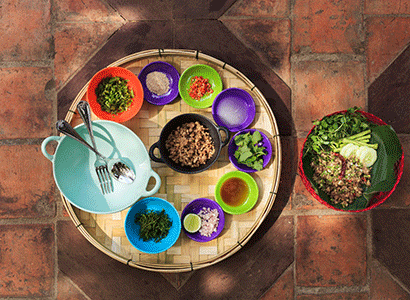 |
Laap is one of the most popular dishes served at Manda De Lao restaurant.
|
Whether enjoying a meal beside the lotus pond or savouring dishes that have sustained Lao families for generations, guests at Manda De Lao are treated to more than just food—they are welcomed into a story of family, culture, and time-honoured tradition.
For anyone visiting Luang Prabang, Manda De Lao is a must-visit destination—offering not only delicious meals but also a meaningful journey into the heart of Lao culinary heritage.
By Souksamai Boulom
(Latest Update May 16, 2025)
|



